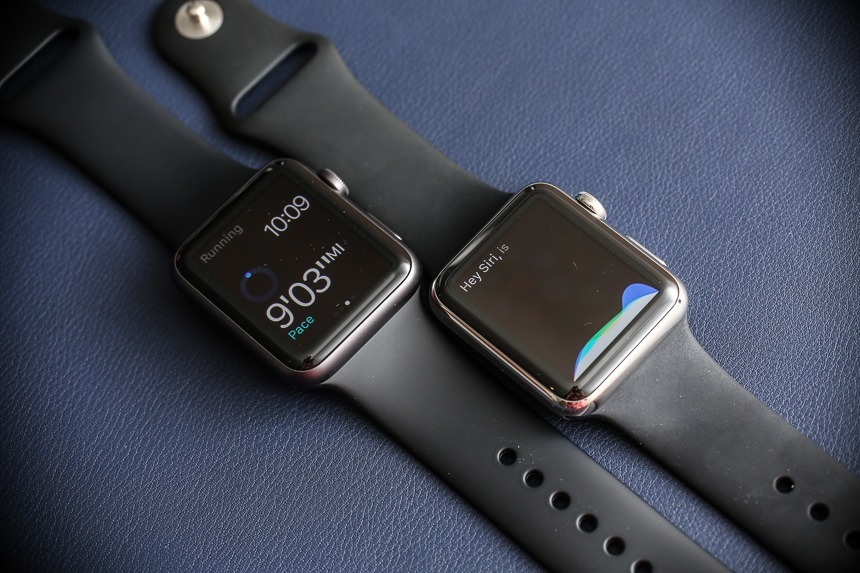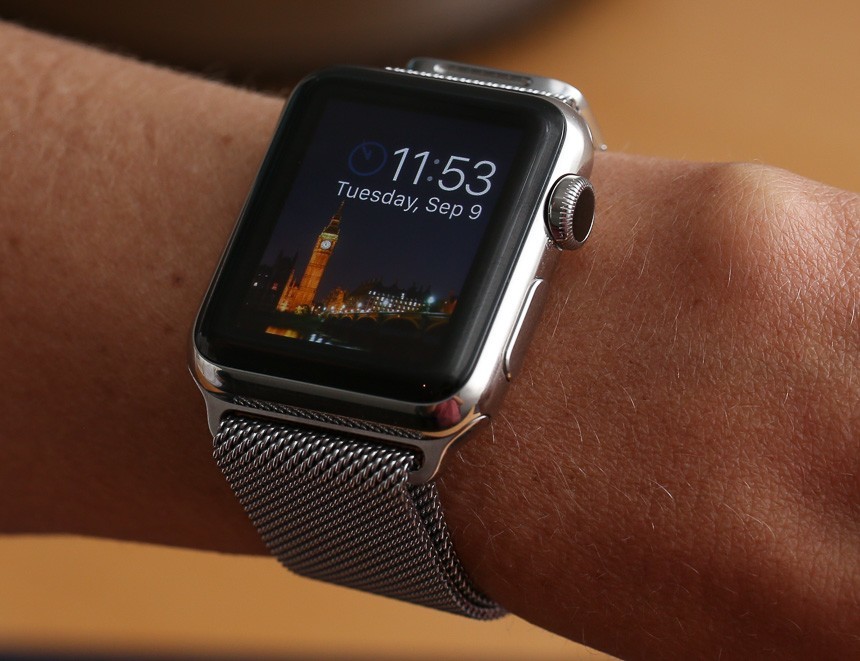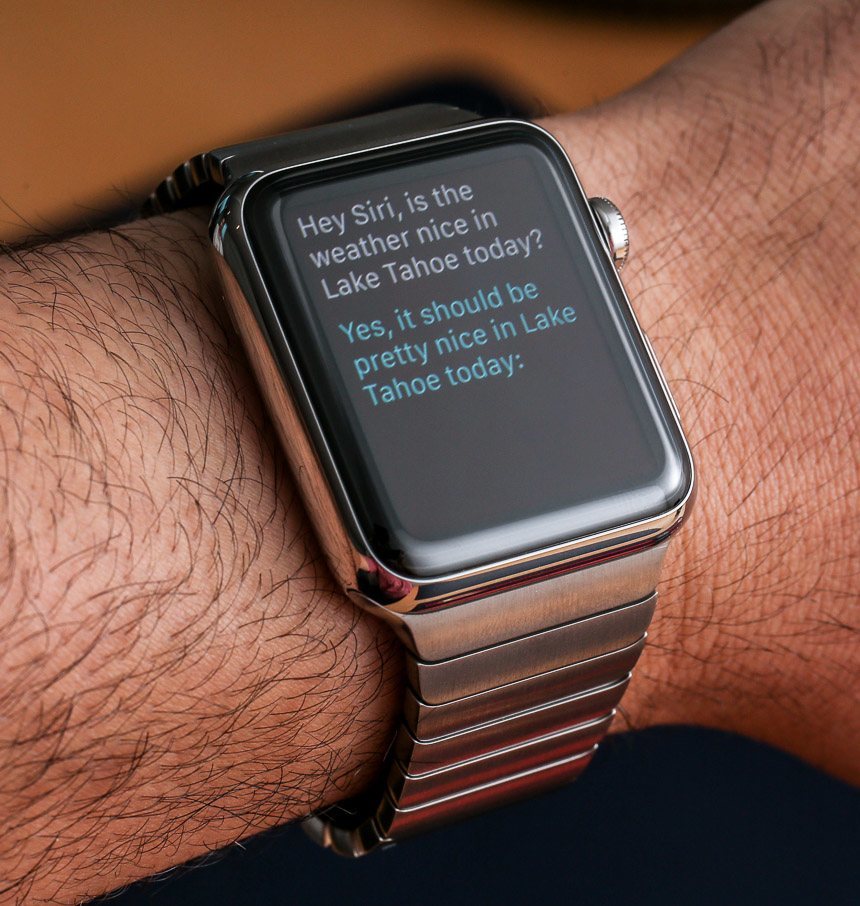
After some hands-on time with the Apple Watch
, I’ve learned a few things. Perhaps the most important of which is that the majority of discussions regarding the Apple Watch by the traditional watch media have been rather misguided. I feel that people need to understand that the Apple Watch is not only a new type of product for Apple, but the first real “cross-over watch” that wades in both the waters of technology and horology. For a moment, I’d like people to put aside their criticisms and complaints, and consider what I believe to be a future inevitability: the dominance of the smartwatch as a necessary tool in the everyday lives of everyday people.
Apple as a company doesn’t like the term “smartwatch” and will not refer to the Apple Watch as such. They didn’t call the iPhone a smartphone, and as far as they are concerned, it is a “watch” produced by Apple – hence the name. What implication might this have for Apple? First of all, Apple is in a complicated position as a lifestyle company as well as a tech company. Apple stopped producing gadgets and advanced computers for merely tech literate geeks for a while now. As of a few years ago, Apple has (perhaps inadvertently) focused more on high-tech, albeit mainstream items for general consumption. In effect, the wide proliferation of their products in tech-savvy circles – as well as more mainstream consumer demographics – has allowed Apple to transcend its original mandate as a computer maker. If you recall, several years ago, Apple officially changed its company name from “Apple Computers” to just “Apple.”
I mention this important segue to suggest that the Apple Watch isn’t just another gadget that Silicon Valley hopes might be its next cash cow. I instead think that the Apple Watch (which we debuted here with a lot more detail) is part of a larger evolution of how we integrate technology into our lives. The genesis of the Apple Watch is still something that Apple will not discuss at length. Apple is famously sly with their responses to product questions, but I gleaned enough information to determine why the Apple Watch has been in the works for years, just as many reports have suggested. At a time when naysayers all over the internet described the Apple Watch (then “iWatch”) as a fiction, I wrote about how such a device was an inevitability, back in January of 2013. Nevertheless, I was proven somewhat wrong about when Apple would release a smartwatch product, as I privately guessed a September 2014 launch was too soon. It turns out that Apple was ready with a product sooner than expected, but still, I was partially correct in that the Apple Watch was still not ready for prime time.
Apple has made it clear that the Apple Watch will ship in “early 2015.” The reason that they aren’t specific with when, is simple: they aren’t done with it yet. The hardware elements of the Apple Watch seem to be complete, but Apple appears to still be tweaking the software for optimal performance. I also believe that Apple has yet to decide final prices for the various versions of their watch.
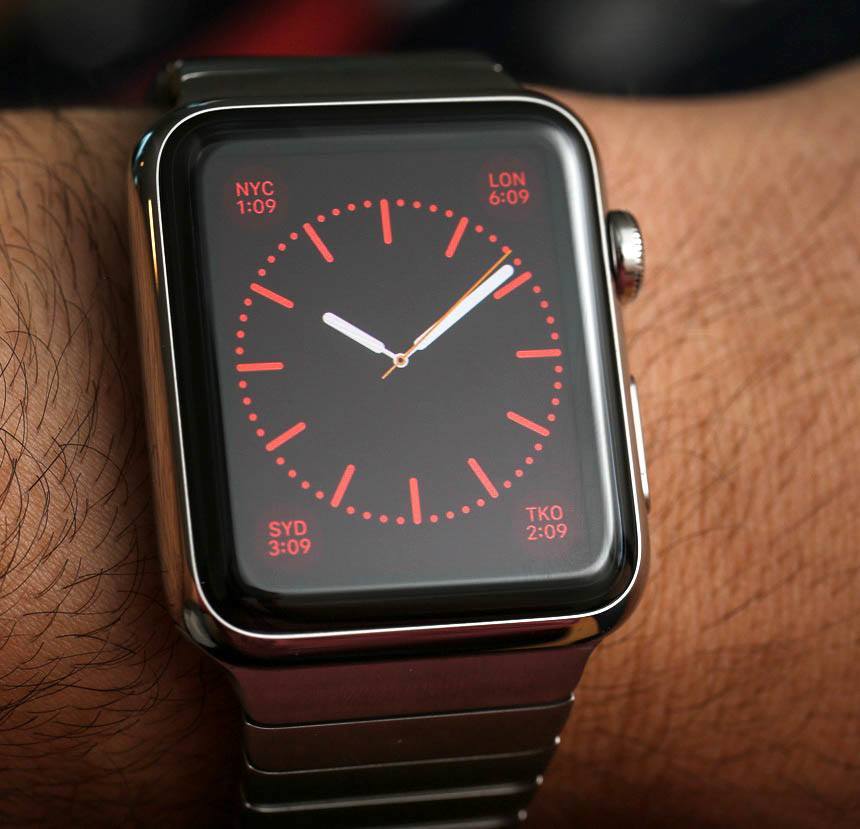
The 42mm Apple Watch In Steel On Steel Bracelet, With A Display For The Local Time As Well As Four Time Zones
How Much Will The Apple Watch Cost & Where Will It Be Available?
The price of the Apple Watch and where people can buy it is a topic of rich discussion. Apple hasn’t announced the full price list because, it’s my guess, they haven’t settled on final prices yet. Apple has indicated that the Apple Watch will start at a price of $350, but that is for the most basic Apple Watch Sport models that come in aluminum cases, without all the “premium materials” available for the Apple Watch in steel or the Apple Watch Edition in gold. Apple pointed out to me that the Apple Watch will be initially available in six different finishes – which is a mixture of both case materials and colors. These finishes include two colors of aluminum, two colors of steel (polished and PVD black), and two forms of gold (18k yellow gold and 18k rose gold). That, of course, doesn’t include the many strap and bracelet options.
There has been a lot of speculation about the prices of the steel Apple Watches as well as the gold models. In regard to the latter (Apple Watch Edition pieces), I would like to confirm that they are in fact produced from solid 18k gold and use a unique manufacturing technique selected by Apple that improves the hardness of gold. According to Apple, the extra hardness is thanks to a special gold alloy, but they didn’t go into more detail.
At $350, the Apple Watch Sport has an aluminum case, non-sapphire crystal, no ceramic parts, and a simple colorful strap that feels like something which is a mix of silicon and rubber. The strap is pretty great, actually, in regard to softness and wearing comfort. This is for the absolute base model. The Apple Watch in steel has a more durable case, sapphire crystal, as well as ceramic elements. I have hypothesized that it will be priced at around $500, but other sources have estimated that the steel Apple Watch will be priced as high as $1,000 – a price that would not surprise me. The Apple Watch Edition in 18k gold is another topic of hot debate. I have previously estimated that it may be priced at between $5,000 – $10,000. Others have estimated prices from about $1,500 – $10,000. That is a pretty big gap in estimated pricing for the Apple Watch Edition. On one hand, the watches do use 18k gold (which is expensive), but on the other hand, we aren’t sure exactly how much gold is in the case and what type of deal Apple has – as they are a company famous for securing good pricing on components and materials. At this point, I would be surprised if the Apple Watch Edition was priced at over $5,000, but also surprised if it was priced at under $1,500 or $2,000.
What is more interesting is where Apple Watches will be sold. All of a sudden, Apple has created a product that might not be ideal for sale only at the Best Buy stores of the world, but rather, high-end boutiques and department stores. Apple didn’t confirm anything, but they did offer an enthusiastic hint of “that is an interesting idea” when I brought up the topic of selling the Apple Watch in non-traditional outlets such as jewelers, watch stores, and department stores. Literally nothing is out of the question at this point in regard to where people might be able to purchase an Apple Watch, outside of buying directly from Apple.
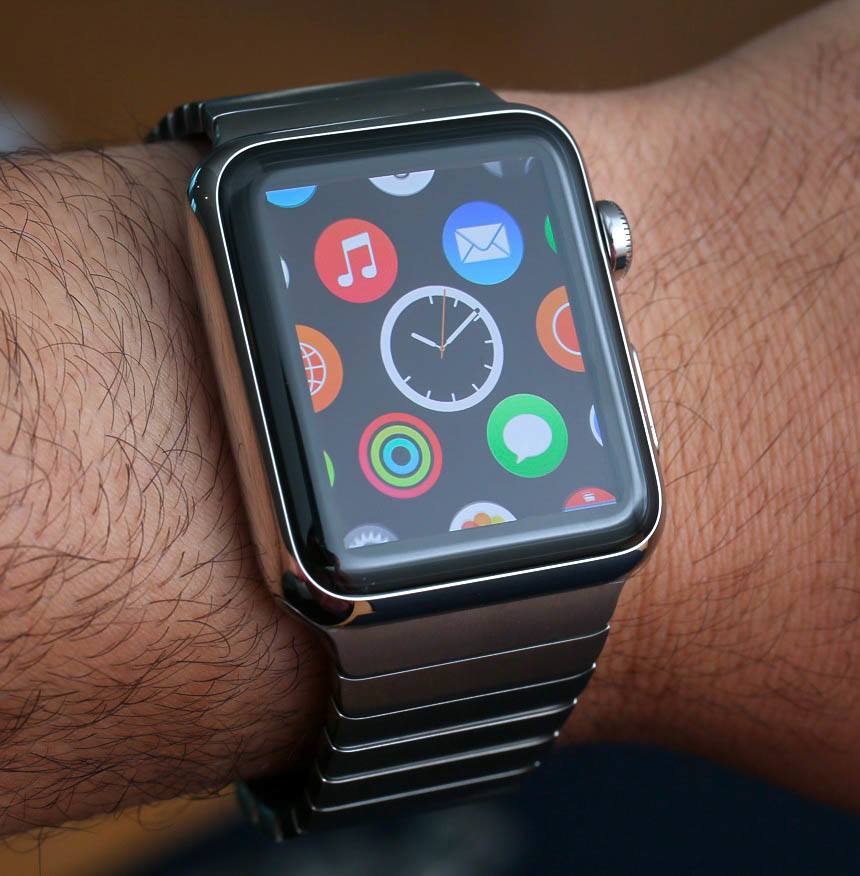
Apps Will Be Navigated On The Apple Watch Through The Touch Screen And The “Digital Crown” On The Side Of The Case
Is The Apple Watch Really A Watch?
Yes, of course the Apple Watch is a “watch.” Many people, especially in the watch community, have defended their love of traditional mechanical watches by segmenting the Apple Watch in a category of high-end gadgets versus “watches.” While I understand and perhaps even empathize with this sentiment, I disagree. If anything, the Apple Watch is what the wrist watch is meant to be in the 21st century. You might not like that, but it is the truth, when it comes to wearable wrist technology. Traditional watch lovers know (and even relish the fact) that their timepieces employ antiquated technology. Such technology might be produced using the most modern construction equipment and with innovative materials, but at the end of the day, no one can argue that a mechanical wrist watch would be able to compete with the sheer utility of a computer.
Having said that, wrist space is an incredibly useful place to put technology. It is easily accessible, easy to see, easy to wear, and most importantly, it is wholly convenient. As humans we have populated our wrists with devices to tell the time starting about 100 years ago, and today in 2014, we should be using the same space in order to offer a range of new information – that includes the time. The Apple Watch isn’t a death blow to the original watch; in fact, it is the most watch-inspired consumer wrist gadget of all time – even more so than round-cased smartwatches, such as the Moto 360, which runs Android Wear.
Those familiar with the world of high-end timepieces will notice an endless series of “watch-related” design cues, noises, materials, finishes, and features that Apple adopted from the traditional world of watches. Some things they improved upon, and some things were merely used in the overall performance of the Apple Watch. A good example of the latter is the alert noise. Apple could have chosen an endless array of sounds to use when the Apple Watch needs to alert its wearer of something. Instead, they used a chiming sound that is clearly inspired by the mechanical chimes present in complicated watches with musical minute repeater or sonnerie complications.
Forgive me for not going into every single detail of how Apple was inspired by the world of traditional watches for the Apple Watch – there are frankly too many to list. I do have confirmation that Apple dedicated a great deal of time to studying and surveying the watch industry, as well as engaging in copious amounts of research on websites dedicated to watches, including aBlogtoWatch. In an inadvertent way, a lot of our work likely helped influence how the current Apple Watch was designed, and where Apple will take the Apple Watch in the future.
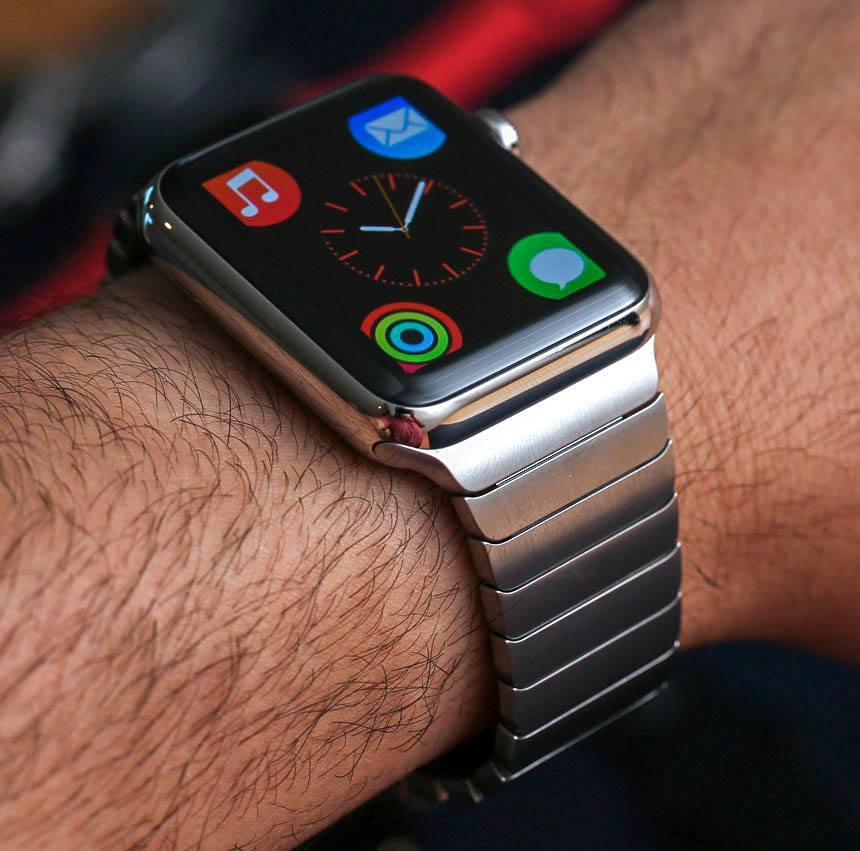
Perhaps the most important element which indicates that the Apple Watch is truly a “watch” is how it fits and is used on the wrist. The experience of wearing the Apple Watch is as good or better than most high-end timepieces, and operating the Apple Watch is very similar to how people might use their traditional timepieces. This is especially true when you compare it to early smarwatches that focused on button-based menus.
In fact, when considering the “watchness” of the Apple Watch, people actually take for granted the concept that Apple focused so heavily on offering about a dozen watch faces right off the bat. In my opinion, if they wanted to take focus away from the “watch element,” they wouldn’t have offered to many analog ways to tell the time that are so clearly influenced by traditional watches.
Having said that, the future of the connected wrist watch is about so much more than reading the time. Apple and its competitors are clearly dedicating huge amounts of resources into trying to discover what other features will best resonate with consumers. Still, the Apple Watch is very much about simply being able to glance at it and read the time – in a way that is both convenient and useful – just like a “real watch.” In that regard, the Apple Watch doesn’t try to reinvent the concept of a “wrist wearable” but begins with the concept of a traditional watch and develops it from there by adding functionality and connectivity. At its heart, I truly feel that the Apple Watch began life as just that… a watch. I don’t necessarily feel that way for many of the currently available competitive products.
Of course, the Apple Watch cannot replicate the total wrist watch wearing experience. At least not yet. Given the limitations of current battery life, the screen must be turned off most of the time, which is a huge drawback from a design perspective. There is no way around that, but when the screen is activated (often automatically as you raise it to read), it is very attractive and pleasant to read. This not only includes a wide viewing angle, but also a crisp level of detail with bright colors and a screen that should be quite legible even in direct sunlight.
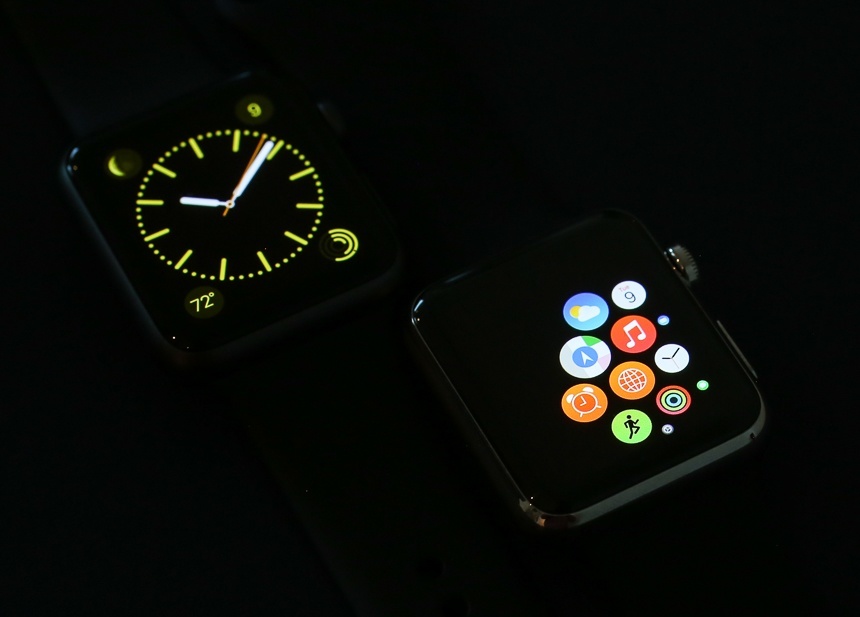
How Do You Interact With The Apple Watch?
Apple has not yet released a final version of the Apple Watch software, so there isn’t a final user interface experience for people outside of Apple to test. However, we more-or-less know exactly what the user interface of the Apple Watch is going to be like, and after experiencing it first-hand, I can assure you it is pretty good. Apple was really (and I mean really) concerned that the screen size of something on your wrist would be far too small to properly interact with. The irony of the Apple Watch release date was that in addition to Apple releasing perhaps its smallest screened item yet, it also released its largest iPhone screen with the iPhone 6 Plus. As you probably know by now, the Apple Watch combines both a touchscreen and a crown, along with an additional pusher on the case. The touchscreen is not multi-touch, but it does have a cool system that is able to differentiate between a short tap and a long press. This is really important in how you select and adjust various functions.
While your finger is used to move around the screen and swipe, the crown is a key element in how you interact with the Apple Watch. In addition to the crown being used as a button (pusher) it is also a scroll wheel. The crown is thus used to zoom (which has a new meaning in the Apple Watch OS), but is also used to scroll through documents such as e-mails and messages. In the future, when I further test the Apple Watch, I’ll be in a better position to comment on the ease of using the interface. I can, however, say that it is among the best (if not the outright best) interfaces I have seen from any smartwatch device today… or even small device overall that is on the market.
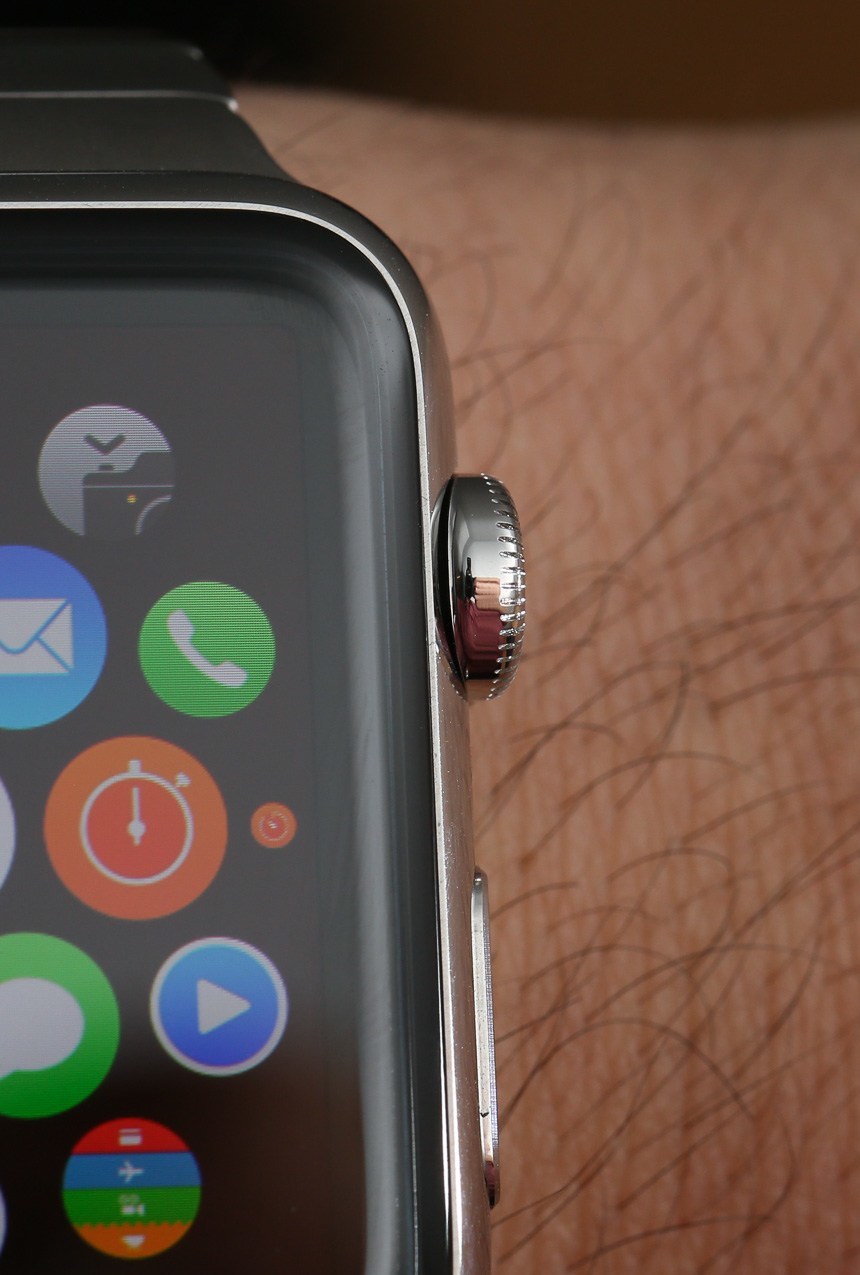
Can you type into the Apple Watch or is there a keyboard? That is a good question, and the answer is no. The Apple Watch employs Apple’s Siri function, which is a powerful voice recognition system that allows you to operate many of the Apple Watch’s features just by talking to it – we have also seen voice activation incorporated into Android Wear, Google’s operating system that is tailored specifically for wearable devices. The Apple Watch also has a speaker built into it (in addition to the microphone). So speaking naturally to your wrist is going to be a lot more common in the coming years. This means that you can have a phone call with your Apple Watch, if you choose, and you can also listen to messages or watch videos on it.
What happens if you get a text message on the Apple Watch? Apple has developed not only a list of canned responses such as “OK” or “I understand,” but it learns from the user and will suggest common responses that you use, with the people that you use those responses with. What the Apple Watch does more so than any other Apple product before is attempt to learn from the user, and strive to customize the experience for them – although its should be noted that this new learning feature is in line with what the new iOS 8 keyboard offers, which has been available in Android for a while. This “learning” not only applies to the responses you make to people in messages, but also in regard to who you call and your activities. While many of these features could have technically been available on an iPhone, for whatever reason, Apple has chosen to integrated them into the Apple Watch.
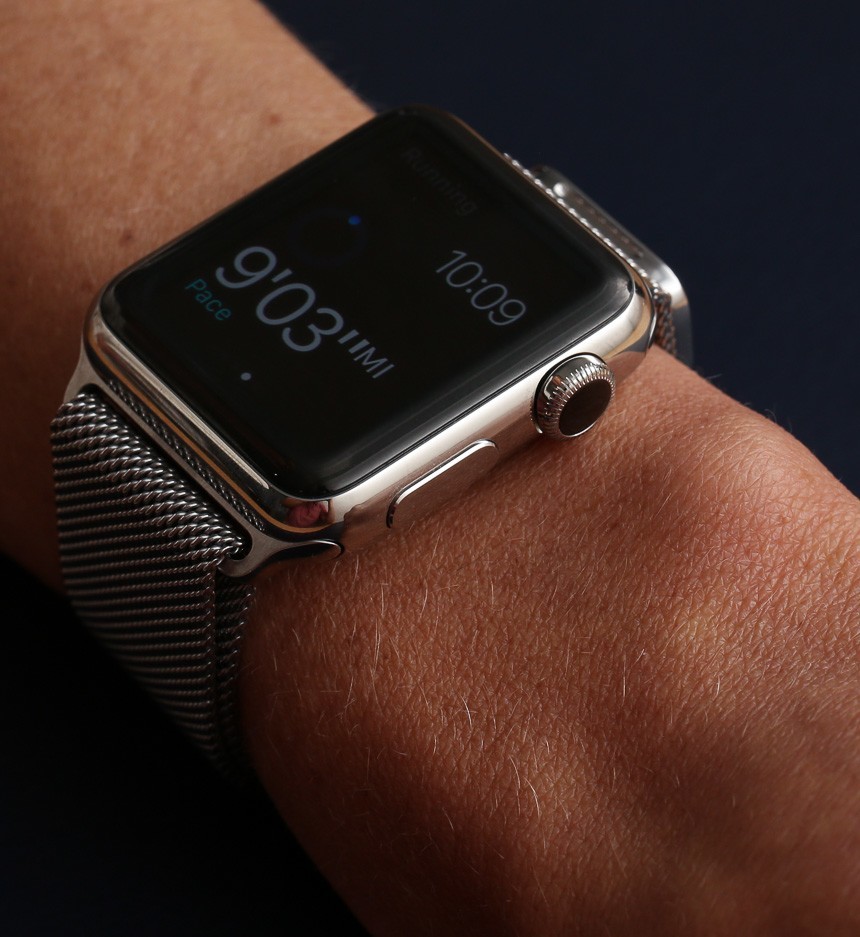
The Apple Watch Is Meant To Live With The iPhone, But It Can Be Independent As Well
While an iPhone can live without an Apple Watch, all Apple Watches must have a host iPhone. None of this is because Apple is trying to make extra money by selling people two products: it is because the technology does not yet exist to allow for smartwatches to seriously live on their own and offer all the functionality of a phone and then some (yes, there are “stand alone” smartwatches, but in my experiences, none of them are particularly good or highly recommended by critics). However, that doesn’t mean that the Apple Watch cannot be away from your phone for periods of time.
A good example is during exercise. Apple indicated to me that you don’t need to take your phone around with you while you exercise, unless you require GPS functions. The Apple Watch can store some media, such as songs, independently on the device (the internal storage of the Apple Watch has yet to be announced), and it can track a lot of exercise and movement data without being connected to an iPhone. Once paired again, the Apple Watch shares data with the host apps on the phone. This answers a lot of questions people had about whether or not the Apple Watch would be able to live apart from its host iPhone device.
Apple actually made clever use of the Apple Watch’s relationship with the iPhone. Apple Watch users will install an Apple Watch app on their iPhone, which will be used to download apps onto the watch as well as likely manage Apple Watch settings. A user’s iPhone is also used to help with computational demands. Apple cleverly pushes a lot of processor needs to the phone in order to preserve Apple Watch battery life. Thus, the Apple Watch is snappier, with longer battery life because a lot of tasks can be off-loaded to the host phone. Having said that, aside from installing apps, most things can be done from the watch itself (such as adjust settings, customize the interface, select watch dials, switch apps, etc…).
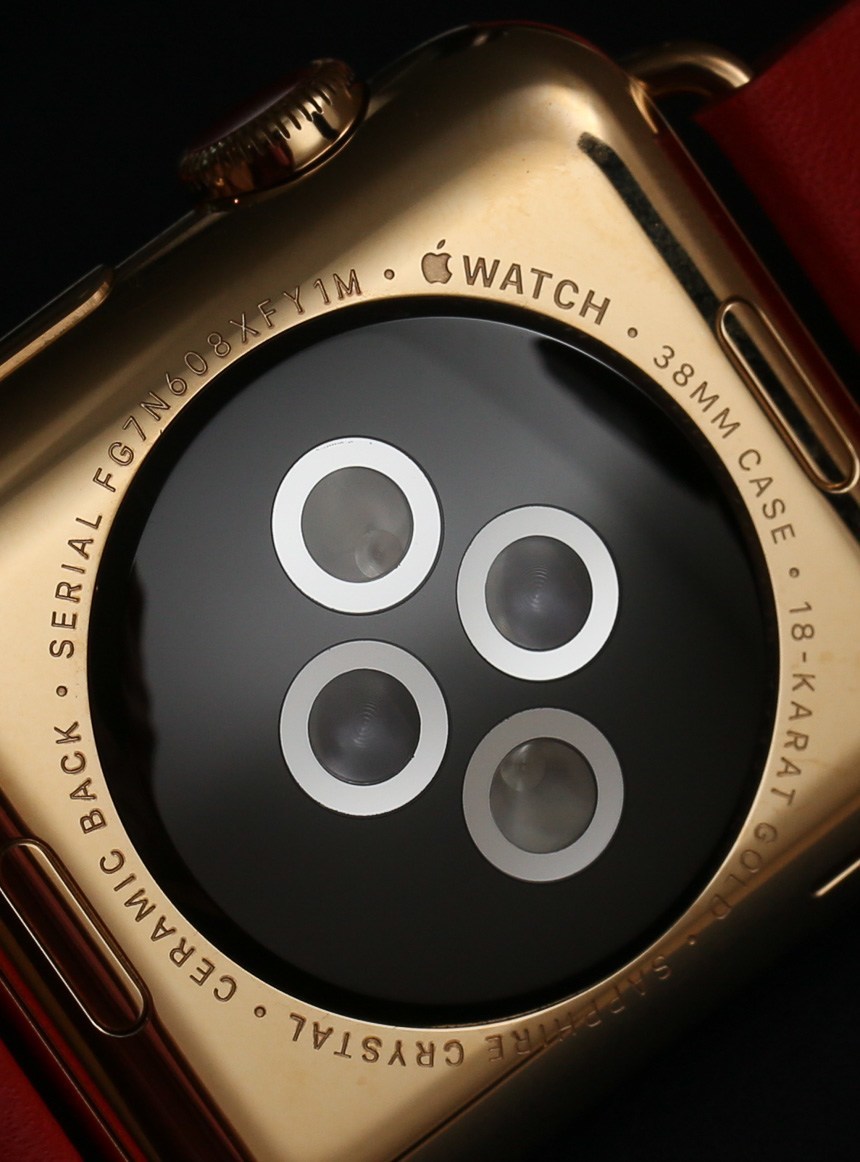
Will The Apple Watch Change The Way You Exercise?
If anything, Apple is a latecomer to the fitness wearable craze, even though many fitness devices already interact with the iPhone. Apple made a big deal about the health and activity apps, as well as the sensors in the Apple Watch, and I think they are on the right track to something that will fundamentally shift the way a lot of people exercise. In other words, while Apple didn’t invent the activity tracker, they can help make it more mainstream given their sway with mainstream consumers.
Using a series of sensors, such as an accelerometer (to measure movement), a pulsometer, and more, the Apple Watch will track your daily activities and offer suggestions that are designed to get users more “active.” Apple is in no position to make lofty claims about how the Apple Watch might help people lose weight or be more healthy, but they have a vested interest in attempting to do so. Not only is the fitness tracking function an important way to explain to consumers why getting an Apple Watch is a useful purchase in addition to their iPhone, but it will help Apple continue to research how people use, and ultimately benefit from activity and fitness tracking tools and software. It has yet to be seen how many people purchase the Apple Watch primarily for its fitness functions, or if they purchase it for other reasons and end up using the fitness functions regularly.
The goal for Apple and its competitors in regard to fitness tech products is likely to develop a means of data acquisition and utilization which turn people’s daily lives into a simple math game of “expend X effort to yield Y rewards.” While years off, it is easy to imagine a future eventuality when devices track the calories we consume and the calories we expend, in order to make weight loss and staying healthy a matter of numbers versus instinct and feelings. The 1950s experienced the era of “better living through science,” a then novel concept that has since evolved into today’s Silicon Valley promoted mantra of “better living through data” (and the interpretation thereof).
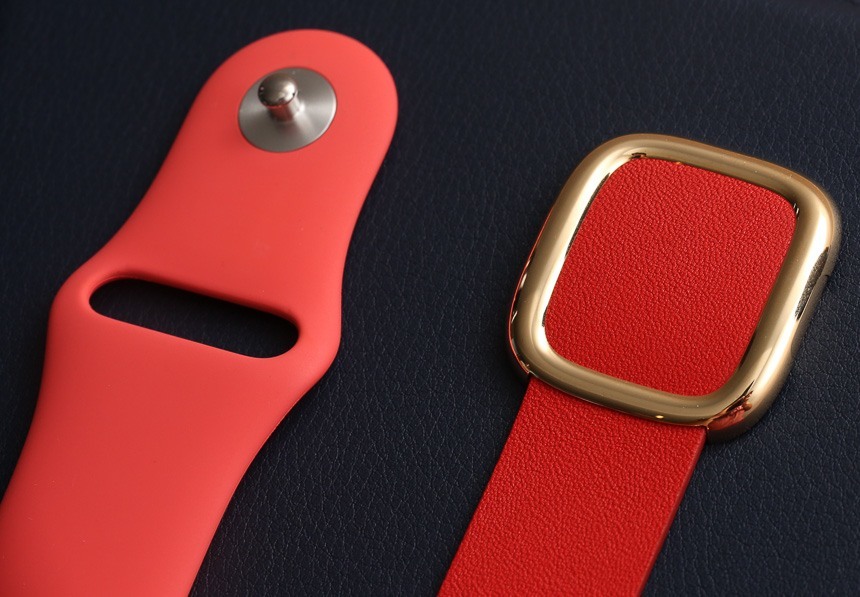
Just don’t take the Apple Watch swimming yet. In the future, the Apple Watch will become more durable – though we haven’t seen any real-world experiences to determine how it holds up to abuse. While Apple hasn’t released specific details yet, they explain that the first generation Apple Watch is “splash resistant.” That more-or-less translates into 30 meters of water resistance measured by traditional watch standards. The translation is that the Apple Watch can put up with a reasonable amount of sweat and dirt, but don’t expect to snorkel or shower with it. Furthermore, I think it is safe to suggest that you shouldn’t take it where you think it might be subject to extreme shock or damage. I have a feeling that some of the biggest future improvements in the Apple Watch will be durability and being able to wear it during even more activities.
Once again, I will have to wait until early 2015 to test the specific fitness applications of the Apple Watch, but I think it has a lot of potential. Again, even if Apple didn’t invent a lot of the activity tracking functionality offered in the Apple Watch, it has streamlined many components and offered them in a package a lot more people will end up using compared to most currently available fitness tracking devices.
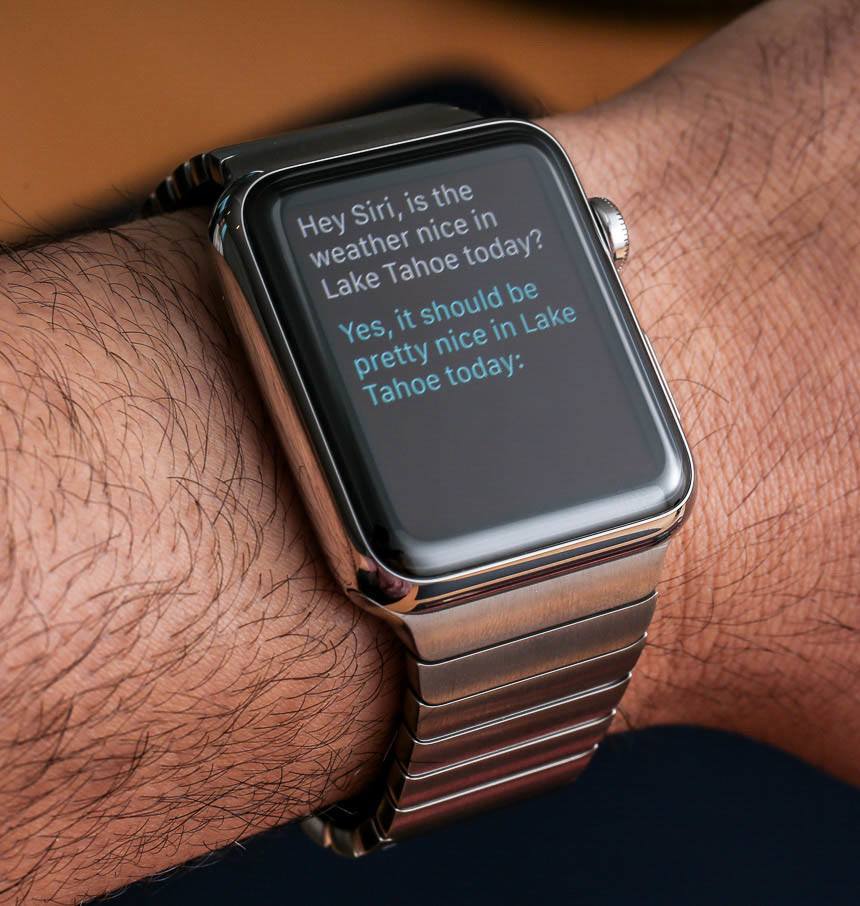
How Will The Apple Watch Change The Way You Communicate?
Perhaps the most widely publicized communication feature of the Apple Watch is its ability to transmit one’s heart beat to the Apple Watch device of another person. Essentially, the Apple Watch has taken the concept of the text message and really run with it – in what arguably is a nerdy and perhaps somewhat “romantic” manner. Oddly enough, many of the cool new communication features employed in the Apple Watch could have easily been part of the iPhone (as I mentioned above). This includes being able to draw little sketches, sharing animated emoticons (emojis), and of course, sending haptic feedback.
Having said that, the iPhone lacks the “Taptic Engine” of the Apple Watch. It is an evolution of the vibration feature found in many devices, which causes the rear of the Apple Watch case to literally tap you. It is gentle, although clearly noticeable, especially when compared to a vibration. I suspect that the “Taptic” feedback will also help prevent “phantom alerts,” which can happen when people physiologically mistake a small feeling or sound for an alert. Many people experience this with phantom rings, when they mistakenly believe that they heard their phone ring. The Taptic (haptic) feedback system in the Apple Watch does a lot of things, but most importantly, it makes you aware of incoming notifications… as well as to indicate the heartbeat of someone sending you a message. Will this be part of next gen “sexting?”
No doubt, the first time anyone receives a “heart beat message” from a loved one, the experience is sure to be strange. Imagine, for instance, the first time you did a video call across the world. The feeling might be a bit like that, only more intimate. Apple hasn’t said this, but the idea of the Apple Watch as a notification tool is to make alerts more personable, and less about some gadget buzzing on your wrist. This required a lot of engineering, and while some people might consider it overkill, I think Apple did a very good job of revolutionizing the concept of a foreign object on your wrist that is suddenly going to bother you about all types of things throughout the day. Again, it is something I have yet to experience outside of a simple demonstration, but what I have seen (and felt) is far superior to what is offered by currently available competitive smartwatch devices.
Use of sketch messages and new types of emoji are interesting, and in many ways are a result of the fact that Apple did not design the Apple Watch with a keyboard. While you can easily pull out your iPhone to send text messages or e-mails, the concept behind the native messaging system built into the Apple Watch is to communicate with emotions versus mere words. I have a feeling that I would personally also create a custom response that says “I just got your message on my watch. I will respond soon when I get to my phone.” It will be very interesting to see how children and young adults react and utilize the new forms of communication offered by the Apple Watch, as well as where Apple and its competitors will take this concept in the near future.
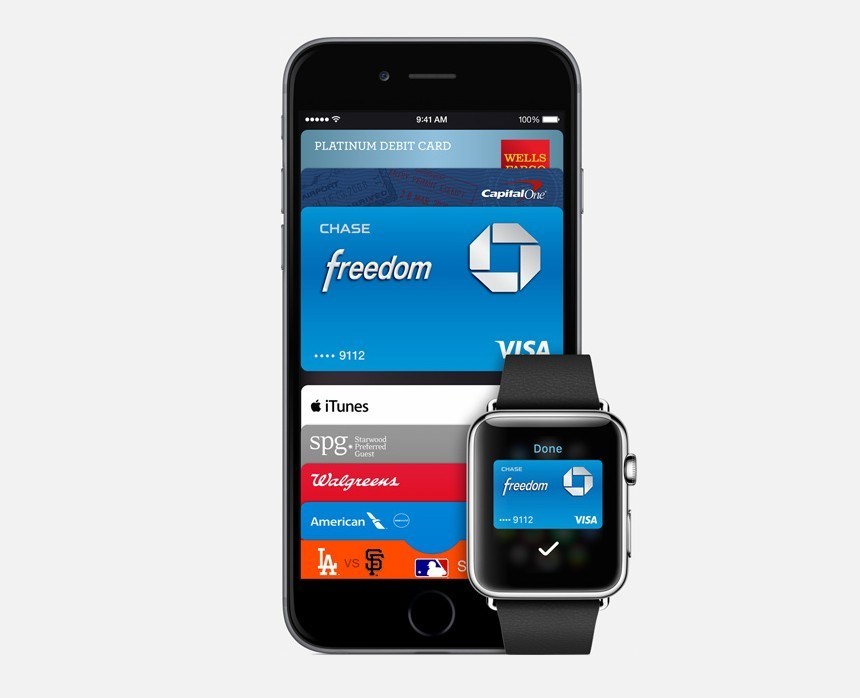
Will The Apple Watch Replace My Wallet?
Features such as Apple Pay and the existing Passbook app are major pushes to a future of when the traditional wallet will become an odd vestige of the past. When Apple announced the iPhone 6 and the Apple Watch, they also announced Apple Pay – a service that many in the tech industry heralded as being among their biggest announcements. What is Apple Pay? Essentially it is a service that allows you to link your credit or debit card with your phone or Apple Watch, allowing for close-contact payments. This means that people will be able to use their Apple Watch to pay for items using their existing credit cards. NFC (near field communication) technology has existed for a few years and it allows people to detach from their plastic cards and pay via phones. Other manufacturers have also used this technology to connect with NFC compatible devices, including wireless speakers, televisions, and more. When it comes to processing payments, however, the technology’s integration by Apple into their watch is a huge push for the segment, given Apple’s influence on mainstream users.
I bring up the importance of Apple Pay not just to illustrate one of the many things people will be able to do with an Apple Watch, but more to highlight some of the potentially valuable reasons why people might consider items like an Apple Watch more than a sheer luxury, but rather a necessity. A legitimate debate exists over whether the Apple Watch is merely a fun second screen for one’s phone, or a new extension of mobile technology that will soon be as indispensable as having a phone. I don’t know the answer, but I do know that if smartwatches are able to negate the need to carry around a physical wallet, then consumers will have a huge incentive to use them.
Of course, there are still two major issues with the Apple Watch replacing your wallet. First, is the fact that if the battery runs out on your Apple Watch or iPhone, then you effectively have nothing. Second, is your ID. As far as I know, there is no digital equivalent or copy of an official identification card such as a driver’s license or passport. Once such unique identifiers become safely digital, then it might be possible to kiss your traditional wallet goodbye. I know I’d like that because my wallet averages about two inches thick – and I hate carrying it around… as much as I seem to like filling it up with pieces of paper and plastic.
How Does The Quality Of The Apple Watch Compare With Traditional Luxury Watches?
I’ve seen some terrible $400 watches and some rather amazing ones. Watch lovers know that you can’t always equate a specific price to a specific expected level of quality. Part of that has to do with economies of scale, meaning that lower production watches often have to charge more for less. This is something Apple does not need to worry about. In fact, given Apple’s likely huge production of Apple Watches, consumers should be able to acquire amazingly feature-rich watches for prices highly uncommon in the watch industry. So with that said, I think it is important to state here and now, that for the money, the Apple Watch is going to be a force to be reckoned with.
In the world of mechanical Swiss watches, very little worth wearing for the serious enthusiast can be purchased for under $1,000. Some people might even suggest $5,000 or even $8,000 (or more) as the sweet spot for a good entry-level Swiss watch. With a starting price of $350, the Apple Watch Sport pretty much blows away everything else in the watch world at this price level – a sentiment that has been already mentioned by my colleagues.
Going up the price ladder, the Apple Watch is still a viable competitor to existing traditional watches. What Apple did that was interesting, was to not only take inspiration from the traditional watch industry, but to improve upon some things. A good example is how they measure their watches. The 42mm Apple Watch (there is also a 38mm version) is measured from top to bottom (height as a function of lug-to-lug distance). In the watch industry, the basic measurement of a case is width, not height. Apple knows this, but ultimately decided to designate the “size” of their watches by height, but not width. Why?
Apple confirmed that there was an internal debate about this. Some people wanted to go with the traditional way of describing a watch’s size, while others said that what was more important to assess a good fit was the height of a watch – such that the edges of the case do not extend past the boundaries of one’s wrist. This is absolutely correct, and something I have been preaching for years. Apple decided that height was a better measurement, and thus decided to use that as a designation, arguably clarifying one of the more ambiguous areas of trying to size a watch without actually wearing it.
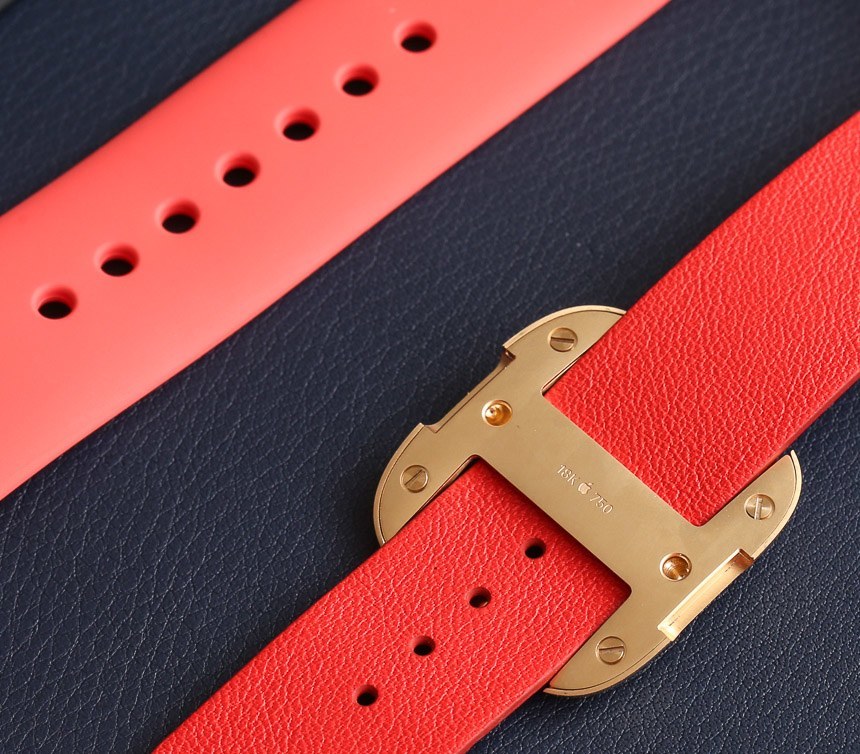
Another great watch improvement by Apple is in their steel metal bracelet. Not only can the bracelet be sized (by removing links) without a tool, but the butterfly-style deployant clasp (even when closed) is totally flush with the bracelet and doesn’t add any thickness. It feels rather natural on the wrist, especially when compared to many other metal bracelets. This is in addition to the clever quick release system allowing a bracelet or strap to be very easily removed from any Apple Watch case. For something even remotely comparable in a high-end Swiss watch, you’d need to spend at least several thousand dollars.
Apple doesn’t have the best track record of producing durable products – as evidenced by anyone you know who had excessive wear on the sides of their iPhone or a cracked screen. These issues indicate that not even working with more high-quality and expensive materials, like aluminum, is a guarantee for greater durability. So where does that leave the Apple Watch? I don’t really know, to be honest, but I am told they have been designed to put up with one’s daily life. I assume that means they can be at least dropped from time-to-time.
The steel-cased Apple Watch with its sapphire crystal will likely be the most durable version, but having said that, the very light-weight Apple Watch Sport in aluminum feels surprisingly solid as well. None of these devices use Gorilla Glass like other Apple products, and they are said to be designed with “impact” in mind. From a fit-and-finish standpoint, they are built excellently – in a manner far removed from other Apple products. While the Apple Watch no doubt feels like something from Apple, it exists in a totally new class, when it comes to use of materials as well as the overall concept of what it even is. There has never been an iPhone designed with a strap for you wrist, nor was it meant to look good with a suit. The Apple Watch was. The various bracelets and straps are not only clever, but really comfortable. The Milanese mesh metal bracelet is “infinitely adjustable” thanks to having a secure magnetic clasp, which is similar to the leather strap that also uses magnets. Unless competitors quickly step up their game, at launch, the Apple Watch could easily make other smartwatches appear primitive by comparison.
For a mass-produced product, the Apple Watch is excellent. While it isn’t hand-polished, nor does it have complicated surfaces like those seen on a Swiss timepiece, it is an amazing achievement, not just for Apple, but for the tech industry overall. I’ve never had what is essentially a high-volume, high-end gadget that felt so good in my hands. The sad thing is that most Apple Watch wearers will not be “watch people,” so they really won’t have too much to compare it with.
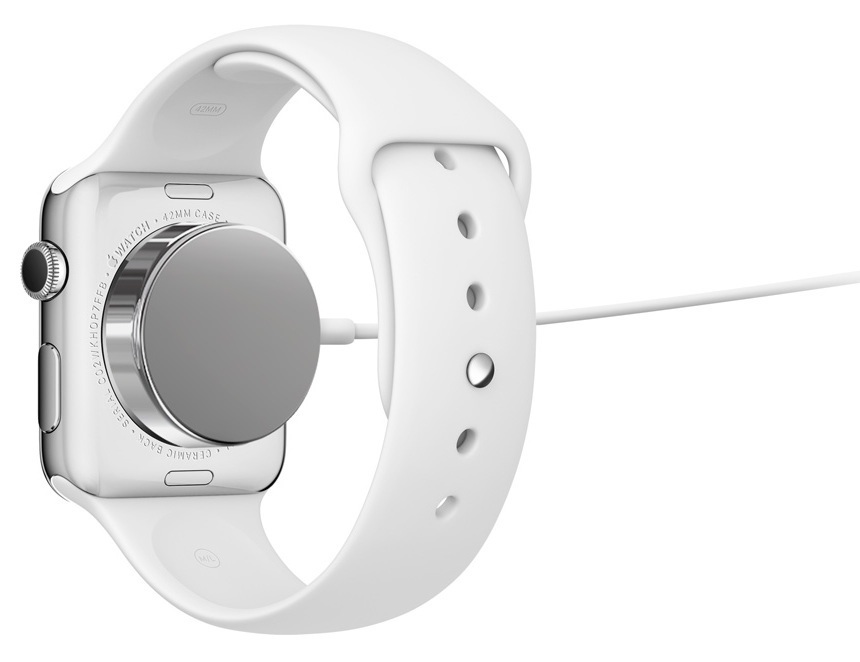
What Type Of Battery Life Can I Expect From The Apple Watch?
About a day of battery life is what you should be able to expect from the Apple Watch. While Apple hasn’t outright said it yet, pulling together various statements they have made, as well as direct statements made to me, I am positive you will need to charge your Apple Watch at least once a day. Interestingly enough, the prototype operating system of the Apple Watch I saw didn’t have a battery indicator on it yet. I am not even totally sure how Apple will display this information, even though there is a “power reserve indicator” on some of the watch dials they debuted.
What Apple would like to say – but won’t – is that they aren’t holding back secret battery technology. No one is. Many consumers are sort of out of touch with reality when they demand faster, thinner, lighter, and more powerful devices… that have increasing battery lives. While companies push to create lower power consumption processors, the biggest eaters of battery life are actually screens and connectivity. While software optimization is a big deal (and what Apple is doing now), the reality is that most companies have to work with the existing state of battery technology. If you want a device with more battery life, you simply need a bigger battery. That isn’t really an option with a watch.
A possible solution in the future is a means of effectively charging your Apple Watch while on-the-go with movement or light. Even though these are good ideas, standard kinetic or light-powered charging schemes would barely keep up with the juice demands of the Apple Watch or other similar devices. Therefore, until the tech industry as a whole debuts a new form of battery technology, we will have to live with optimization and clever use of power. The Apple Watch does as much as it can by offloading processes to its host iPhone.
Is The Apple Watch Beautiful?
Traditional analog watches have been doing more-or-less the same things for so long, pretty much the only way consumers decide between one watch and another is aesthetic beauty. This includes the overall quality of execution and the extent to which any and all details have been refined. Watch design has become so good, that it has remained a huge industry for a long while after people actually needed wrist watches to tell the time. The luxury watch industry is based on offering emotionally-charged, good-looking watches that serve as lifestyle statements and status symbols for the people who wear them. We often consider finely made watches to be jewelry for men.
Given that, it isn’t difficult to see why watch lovers are so intimately concerned with how beautiful a watch is – likely much more than technology users are concerned with the physical design of their products (as compared to their concern for functionality or performance). Apple has for long been the poster child of “attractive tech,” a label that may ultimately remain intact, or discarded by consumers when the Apple Watch is released for sale. So, what do I think, is the Apple watch beautiful?
Compared to the way that some of my favorite mechanical watches are beautiful? No. The Apple Watch’s beauty, for me, lies in how well it does what it was designed to do, and how nice of a package Apple was able to design for it. The watch industry has long since proven that rectangular watches are difficult to get right, and further shown that minimalist designs are tricky when it comes to making them classics. The first generation Apple Watch is most certainly a watch, but it won’t become a wrist watch design icon on its own. Yet, I find that doesn’t bother me, because I am interested in it for enough other reasons.
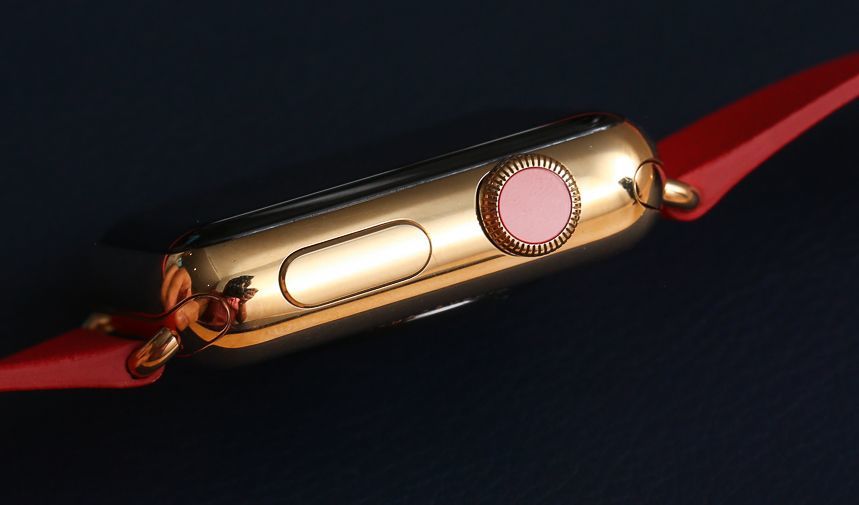
The Apple Watch is very good looking for what it is, and it feels good to hold, wear, and operate. Form follows function in the Apple Watch, but that isn’t enough for serious design lovers – especially those who have been wowed by the luxury watch industry for years. We should also consider that Apple needed to create a product that was acceptable to many different people, and also customizable. The Apple Watch succeeds at its mission, but won’t receive top design honors from European authorities – at least not for now.
The beauty of most watches for men, is in their ability to make the wearer appear original, and full of character. You simply don’t get that out of a piece of technology. Like I said, at least not yet. I remind you, this is the first Apple Watch, and things like design will evolve. Apple knows this, and they should be given a lot of credit for what they have done so far. The Apple Watch is really unlike anything they have done before. Those with an intimate knowledge of what it is like to get a company to produce something “new” for their own culture will appreciate what an ordeal it must have been at Apple and the many internal (and probably entertaining) debates.
Perhaps watch lovers are allowed to be very hard on the Apple Watch design. Apple is in fact asking them to potentially give up something they love for something that in a few years they might not be able to live without. I’ve personally mentioned that I fully plan on wearing a traditional mechanical watch on one wrist, and an smartwatch on the other in the near future. So where does that leave the general public? Without too much to compare it to, given that they don’t have years of high-end watch wearing experience, the Apple Watch is going to look stunning to most. For many people, it will likely be the most high-end timepiece they have ever worn; and I think they will love it.
Who Should Buy The Apple Watch First?
If all goes well, the Apple Watch will be a new arm of the larger Apple product family. That means there will be the Apple Watch, and the successors thereof. I am pretty sure that with each new model, Apple will integrate more functions to attract even more people. So who should invest into getting a first generation Apple Watch?
I highly recommend the Apple Watch for people who like to playfully communicate with their friends and loved ones. The new communication tools are impressive, and will no doubt prove addictive for young people and those who grew up with technology.
It is also easy to recommend the Apple Watch for people who keep their iPhone in a purse or out-of-the way pocket. Checking, reading, responding to, and dismissing messages from an Apple Watch will make it easier for people to stay on-the-go and not be bogged down each time they need to take out their phone. Used properly, I think the Apple Watch has the potential to save time, versus use more of it. I have yet to test these assumptions, but I anticipate that the notification features of the Apple Watch will prove promising.
Do you love to exercise, and do you love data? Perhaps you don’t love to exercise and you want a device to help you do so. Apple isn’t innovating in the fitness tracker space too much, but they are offering a solid experience with a typical level of Apple sheen and simplicity. Apple has confirmed that its own employees who tested the Apple watch’s health functions ended up being more active. Of course, this is not proof that the Apple Watch helps people lose weight or be healthier, but the potential does exist. By quantifying activity goals into numerical values with achievable results, the Apple Watch incorporates some of the most popular features that many people are increasingly loving about fitness trackers. Apple could help make these tools much more mainstream.
By considering the sensors available in the Apple Watch and the fact that one can download apps for it, the potential utility of the smartwatch is really endless. My prediction is that in the next few years, there will be a number of smartwatches available which will have features most people will really want to incorporate into their lives.
The reaction to the Apple Watch among the watch community has been interesting, but not unexpected. In further discussion of how smartwatches will effect the watch industry I asked the question of how screwed the watch industry is because of the Apple Watch here. Aside from denying it “watch status,” they have referred to it as everything from ugly to useless. Once again, this is a sentiment often associated with items that may compete with one’s passion or interests, or when an item or company enters a new space. Skepticism is the norm in such instances and whereas traditional watch lovers have more-or-less ignored most smartwatches to this point, they have given the Apple Watch a huge amount of attention – even if has been both bad and good attention.
Given that the Apple Watch is so highly inspired by traditional watches, I think the reaction to it by the watch lover community is worth noting, though it should be understood for what it is by anyone who views it from the outside. I don’t think anyone in the watch lover community likes or dislikes smartwatches anymore than anyone else, but they are a lot more highly invested in what they are wearing on their wrist already. Apple’s watch, as well as the best that become available from its competitors in the future (mostly will likely run Android Wear), threaten to force a lot of people to potentially make a decision about what is on their wrist. Will people opt for classic design, tradition, style, and collectibility, or will they opt for functionality, connectivity, and convenience in a much more modern package? A lot of watch people at some point soon will face what I call the “Luddite’s dilemma…” stick with what you know and love, or brave the promises of the future, with all its uncertainties and learning curves.
Even if in the next year, smartwatches don’t exist that have features you really want to include in your life, within a few years, they will. Watch lovers have a lot to look forward to, as well as some difficult decisions to make. In comparison, the general public will – for the first time in a long time – become very interested with what is on their wrist, and many of those wrists will have Apple Watches on them. apple.com

